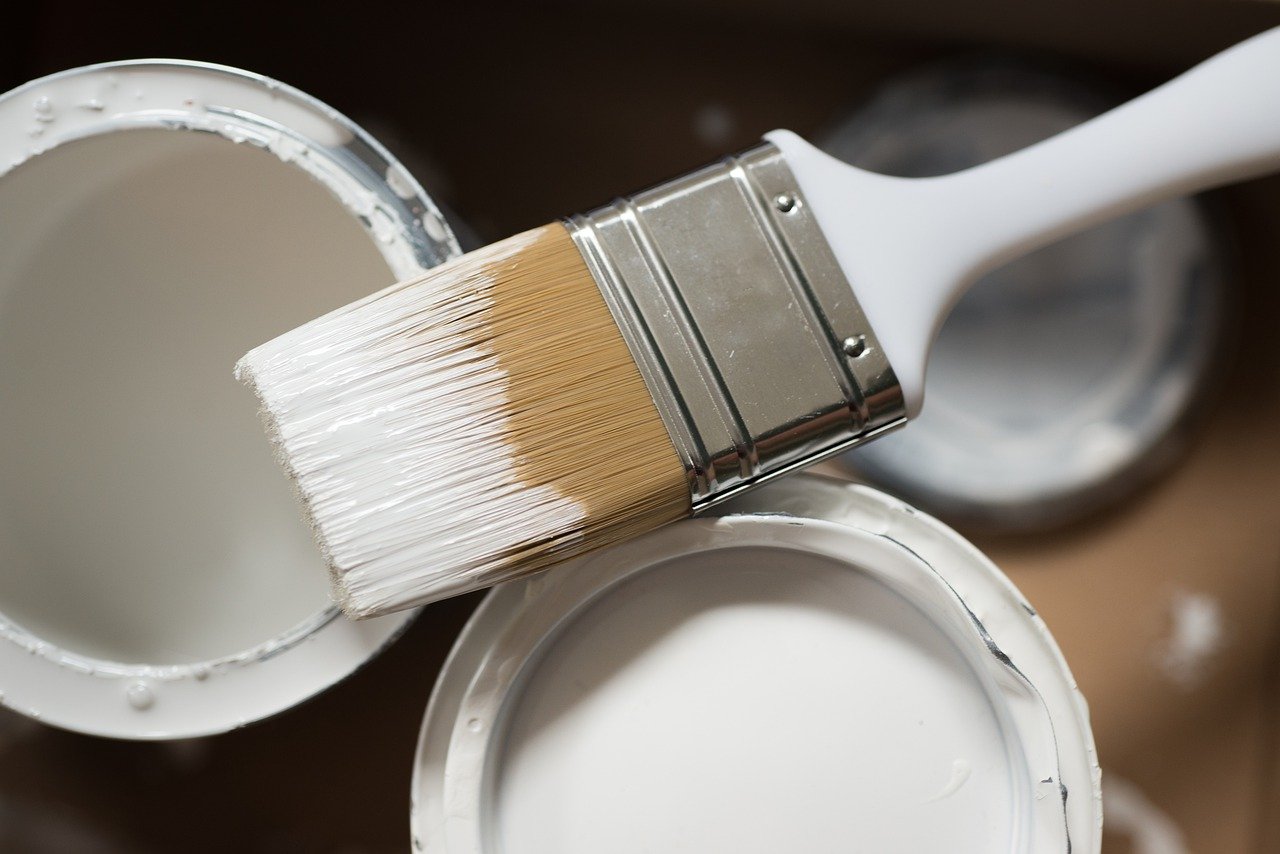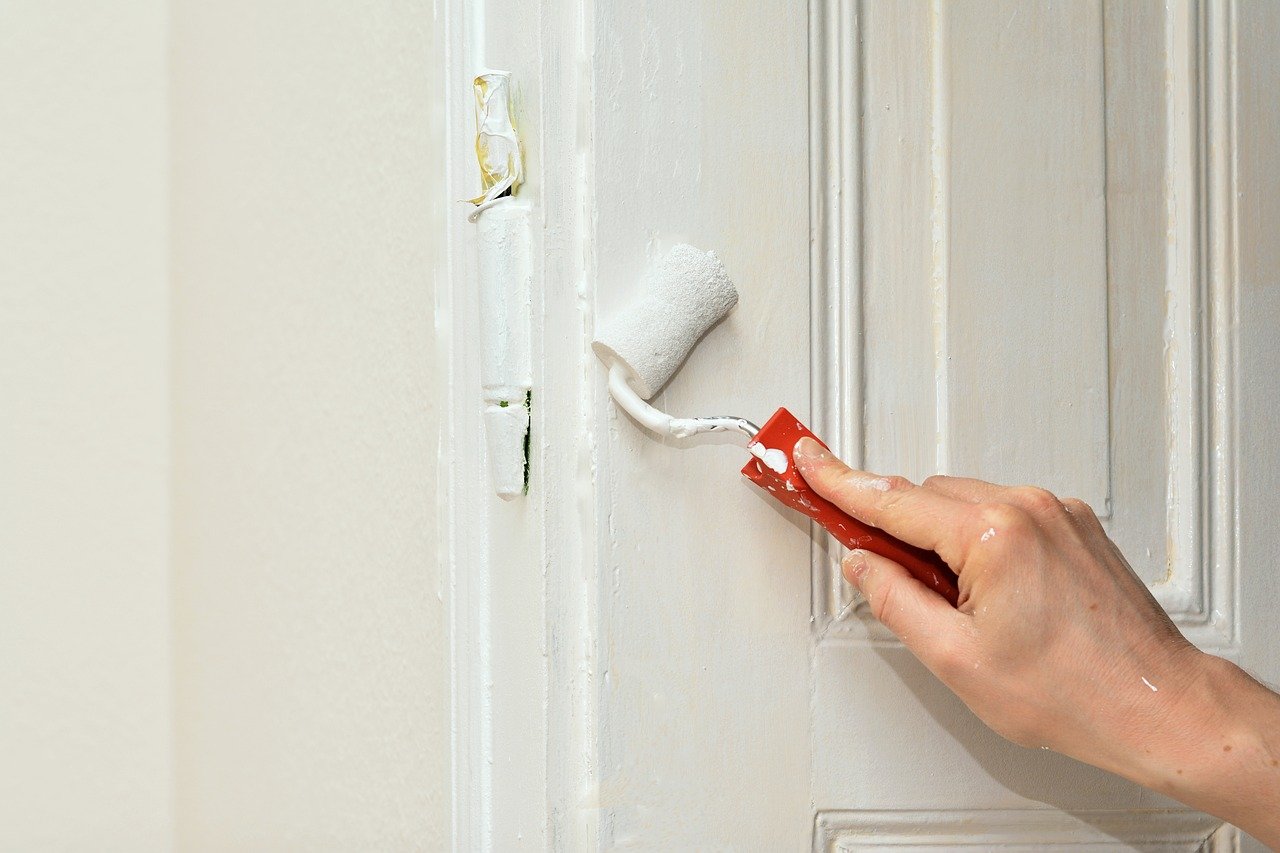
One of the most fundamental features of fire resistance within a building is the use of fire doors. Fire doors are generally 10mm thicker than regular doors. Built from sturdy materials, they are respectively a lot heavier to withstand fires. The manufacturing of fire-resistant doors is regulated to FD standards. This determines the stability and integrity of all fire doors. FD30 and FD60 fire doors are most common. These titles describe the length of time in which the door can withstand roaring flames, which is 30 and 60 minutes respectively.
Whilst fire doors understandably vary from regular doors, the means in which they can be painted barely differ. There are certain regulations that you must adhere to, though with preparation and planning these can be upheld with ease.

Fire doors can be painted with regular paint. Wood and timber fire doors can be painted with paint or varnish, though it is advised not to paint them excessively, so be wary of the number of coats that may have been painted previously. Do not thicken the door any more than it needs to be.
It is important to be wary of any door hardware whilst painting. As per Fire Regulation Standards, it is imperative that hinges, handles and other hardware not be painted. Any hindrance to their performability will render them unsuitable for fire safety.
Given their unique manufacturing process and requirements, fire doors do not come in a huge variety of colours. It can be difficult to find a suitable door that complements the decor of a pre-existing building. Measures may need to be taken to bring them up to scratch with the style of the building.
Due to their particular attributes and regulations, it may seem unlikely that fire doors can be painted without prior fire safety knowledge. Though in reality, the answer is quite the contrary.
There is no evidence to suggest that painting over intumescent seals has any detrimental effect on the performance of the seals. In fact, it can actually be beneficial to paint over the strips to a certain extent. A layer of paint can help prevent the absorption of atmospheric moisture. There are limits, however as to how much you can overpaint an intumescent seal before they become inoperative and rendered useless. It is recommended that painting be limited to a maximum of five coats of conventional oil-bound paint or varnish.
Different types of fire doors come with different features that prevent smoke and fire. Intumescent strips are designed to expand in immense heat and prevent the flames from breaching past the frame.
Their flexibility is required to function properly. Painting over these seals will reduce their effectiveness at containing smoke. If your smoke seal has already been painted over, then these will need to be replaced at the earliest opportunity.
Smoke seals are an important safety feature of fire doors that prevent the leakage of dangerous toxins from a burning room. Fitted around the edge of the door, these are made from loose fabric that is designed to compress or deflect the smoke.
As you would paint a regular door, painting a fire door is not much different. Having the correct paints and tools available will certainly aid you. As you would prepare and paint an internal wooden door, you should prepare similarly when painting a wooden fire door. Be sure to cover the hardware so as to not paint it.
An extra lick of paint can improve the appearance and it’s particularly important for wooden doors. If the weather has chipped any of the original coat, moisture can seep through the cracks and subsequently damage the substrate of the door.
Metal fire doors come with their own properties and functions that must be catered to specifically. The materials used to manufacture metal fire doors may benefit from a coat of external paint. This will not only provide a sleek, professional look but also add a layer of protection from deterioration.
Though manufactured to withstand weathering, over time the metal can become faded, chipped and a little worse for wear on the eyes. Though the functionality remains the same, the way in which your building is perceived can be altered and a layer of paint will do the door a world of good.
Most metal fire doors are primed and ready to spray once they have been installed. Below is a step-by-step guide to painting your metal fire door.
Regular paints and varnishes can be used to decorate fire doors. However, there are fire-rated paints available should you wish to use them.
Fire-rated paint is specifically designed to prevent the spread of fire over the painted surface by releasing a flame dampening gas once the paint becomes hot. Regulated by the British Safety Standards BS 476, fire retardant paint can be used on both interior and exterior fire doors.
The lifespan of fire-resistant paint depends solely on the brand and its type. Some range from 12 - 15 months, others average at around 9 months before reapplication is required. Decorating Warehouse provides clear advice on how to apply fire resistant paint.

There are no regulations that prevent the painting of wooden fire doors with a specific paint. It is at your discretion whether you use fire regulated paint or regular paint, as either are suitable for the decorating of your door.
It might be the case that you already have fire doors installed, and are looking for a fresh look that compliments the rest of the building. Or you may have purchased new fire doors that are primed and ready to decorate. Whatever the case, preparing and painting your fire doors should be hassle-free.
Proud stockists of....
